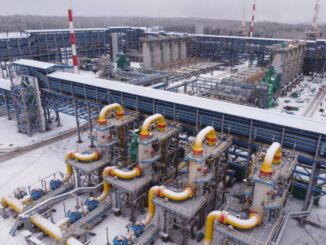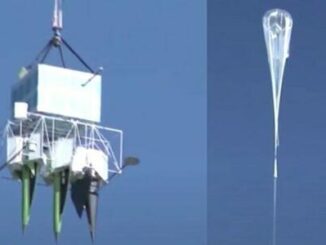
Russia’s oil and gas sector, a cornerstone of its economy and a key funding source for the ongoing conflict in Ukraine, is facing a sharp downturn this month. According to estimates, revenues from these exports are projected to plummet by 23% year-on-year to approximately $7.11 billion (592 billion rubles) in September 2025. This decline, driven by falling global crude prices, a strengthening ruble, and persistent geopolitical pressures, underscores the vulnerabilities in Moscow’s energy-dependent budget as it grapples with Western sanctions and domestic disruptions.
The year-to-date figures paint an even starker picture: from January through September, oil and gas revenues are expected to total $79.6 billion, a 20.5% drop compared to the same period in 2024. While September’s haul represents a 17% increase from August—thanks to reduced government subsidies for refiners—the overall trend signals mounting challenges for Russia’s 2026 fiscal planning. With the war in Ukraine continuing to drain resources, this revenue squeeze could force tough decisions on spending priorities.
Are you Paying High Taxes in New Jersey, New York, or California?
Factors Fueling the Revenue Slump
Several interconnected factors are contributing to this revenue erosion. International crude oil prices have softened amid ample global supply and moderating demand, exacerbating the impact of deep discounts on Russian grades like Urals, which trade at a premium to Brent but still below Western benchmarks due to sanctions. The ruble’s appreciation against the dollar—bolstered by high interest rates and capital controls—further diminishes the value of export earnings when converted to rubles.
Geopolitical tensions have added fuel to the fire. Ukrainian drone strikes on Russian refineries have disrupted operations, leading to a $920 million drop in crude and fuel export revenues in August compared to July, with total August revenues at $13.51 billion. These attacks have idled key facilities, prompting Russia to ban refined petroleum product exports since February and pivot toward crude shipments. Despite some refineries resuming post-maintenance, petroleum product exports rose 8.9% month-on-month in August, primarily from Baltic, Black, and Azov Sea ports, though Arctic shipments declined.
Western sanctions, including the G7’s oil price cap, continue to shadow trade flows. U.S. pressure on major buyers like India has widened discounts on Russian crude, while shadow fleet tankers—often uninsured and flagged in non-Western countries—facilitate much of the remaining trade. In August, 53% of Russia’s seaborne oil shipments (25 million tonnes total) were carried on G7+ tankers, down from July, indicating a shift to riskier vessels.
Production Numbers Versus OPEC+ Quotas in 2025
Russia’s adherence to OPEC+ production quotas has been a mixed bag throughout 2025, with output often falling short of targets amid voluntary cuts, sanctions, and infrastructure hits. Under the latest OPEC+ agreement, Russia’s quota for September stands at 9.449 million barrels per day (bpd), up from 9.344 million bpd in August as the group begins unwinding some cuts. This gradual increase aligns with OPEC+’s plan to add about 1.3 million bpd collectively in 2025, matching non-OPEC+ growth.
However, actual production has lagged. In June 2025, Russia produced 9.022 million bpd against a quota of 9.050 million bpd—the largest gap of the year so far. Earlier months showed similar shortfalls, with May output near-compliant but still below potential. Recent drone attacks have pushed Russia “close to cutting output” below quotas, as refineries and export terminals face repeated strikes. Overall, non-OPEC+ producers like Russia are on track for 1.4 million bpd growth in 2025, but Moscow’s effective capacity is strained.
Looking ahead, Russia aims to sustain 10.8 million bpd in output, leveraging domestic demand and global recovery, but sustained compliance with OPEC+—which has raised quotas by 2.5 million bpd since April—remains uncertain amid these pressures. OPEC+ meetings, including a recent one on September 7, confirmed plans to return 1.65 million bpd in cuts starting October, but Russia’s share will depend on market dynamics.
|
Month (2025)
|
OPEC+ Quota (million bpd)
|
Actual Production (million bpd)
|
Variance
|
|---|---|---|---|
|
June
|
9.050
|
9.022
|
-0.028
|
|
August
|
9.344
|
~9.3 (est.)
|
~ -0.044
|
|
September
|
9.449
|
TBD (potentially below due to attacks)
|
N/A
|
Note: September production data pending; estimates based on trends and disruptions.
Shipments: Shifting Destinations Amid Sanctions
Russia’s oil and gas exports have rerouted dramatically since the 2022 invasion, with Europe no longer the primary market. Seaborne crude exports remain robust, with September plans from western ports revised upward to 2.1 million bpd—an 11% increase from initial schedules—despite Ukrainian strikes choking some flows.
Key destinations for Russian crude oil in 2025 include:
China: The top buyer, accounting for over 40% of exports (around 0.96 million bpd in recent trackers). China imported $129 billion in total Russian goods, dominated by fossil fuels, and continues to snap up discounted Urals.
India: A close second, with $66.1 billion in imports, primarily crude. India’s purchases surged in 2025, outpacing Middle Eastern suppliers like Iraq and Saudi Arabia, though U.S. pressure may temper volumes.
Turkey: Leads in oil products, with $31 billion in total trade. Turkey’s role as a refining and re-export hub has grown.
European Union: Despite bans, some indirect flows persist via third countries; EU imports dropped sharply, turning a trade surplus of 0.8 billion euros in Q2 2025. Russia’s share in EU oil imports is minimal.
Brazil and Others: Brazil took $11.1 billion, while smaller volumes go to Kazakhstan and emerging markets like Syria (recently loading Russian crude for export).
For natural gas, exports have plummeted to Europe—down to 12% of EU imports in Q2 2025 from 48% pre-invasion—and hit historic lows overall. Russia is pivoting to Asia: China dominates via pipelines like Power of Siberia, with a new 30-year Power of Siberia 2 deal routing gas through Mongolia. Annual gas exports to Asia rose to offset European losses, but total volumes are decreasing. Coal follows suit, with China as the primary buyer.
In August, fossil fuel exports were highly concentrated: China for coal and crude, Turkey for products. Ukraine’s transit contract ends January 1, 2026, potentially further isolating Russian gas from Europe.
Outlook and Implications
As September unfolds, Russia’s energy revenues face headwinds from volatile prices, sanctions enforcement, and military vulnerabilities. While OPEC+ quota hikes offer some relief, production shortfalls and shifting trade routes highlight the sector’s fragility. For global markets, this could mean tighter supply if disruptions escalate, but also opportunities for non-sanctioned buyers like China and India to secure bargains.
Energy News Beat will continue monitoring these developments as they impact global energy security and prices.
Avoid Paying Taxes in 2025
Crude Oil, LNG, Jet Fuel price quote
ENB Top News
ENB
Energy Dashboard
ENB Podcast
ENB Substack






